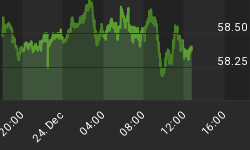Appreciating that consumer price inflation is a monetary phenomenon and that the lags between policy actions and the manifestation of consumer price inflation are long (and perhaps variable), there is a better way for the Fed to attain its goal of inflation containment without contributing to the amplitude of business cycles. That consumer price inflation is a monetary phenomenon is a tautology. In a pure barter economy, there could not be general price-level increases because there is no general price level or numeraire. There could only be changes in relative prices. That there are long policy lags involved in the generation of consumer price inflation is suggested in the chart below. Plotted in the chart are the year-overyear percent changes in annual averages of the actual Personal Consumption Expenditure price index vs. forecasted changes. The forecast is based on year-over-year M2 money supply growth lagged three years, a constant term and a correction for serial correlation. The adjusted R-squared for this regression is 0.76. Different lags of M2 growth were tried, but the threeyear lag produced the best statistical results. Although the model's forecast missed the magnitudes of the twin spikes in consumer price inflation in 1974-75 and 1979-81 brought about by geopolitically-motivated interruptions in the supply of crude oil, the model did capture cyclical trend movements. Based on past money supply growth, the model is now forecasting a moderation in consumer price inflation through 2008. Perhaps the largely demand-side-motivated current spike in crude oil prices will yield a spike in consumer price inflation this year or next that the model is not forecasting. Perhaps fortuitously the monetary forces already in place (a slowdown in M2 growth) will mute the impact of the current spike in oil prices on consumer price inflation more than in times of prior oil-price spikes.
Personal Consumption Expenditure Price Index: Actual vs. Forecast*
(year-over-year percent change in annual average)
The takeaway from this inflation model is that the lags between money supply growth and consumer price inflation are long. Other models suggest that the lags between monetary policy actions and real economic activity are much shorter. So, by trying to fine-tune real economic activity in the short-run, the Fed could be setting in motion inflationary impulses that do not appear for years to come. This is what results in boom-bust cycles. The Fed "fights" recessionary forces, which unleashes future inflationary forces. Then the Fed trains its weapons on inflation, which results in recessions. If, as I suggested in a previous commentary (http://web-xp2a-pws.ntrs.com/content//media/attachment/data/econ_research/0603/ document/ec033006.pdf), the Fed were to target and achieve some steady rate of growth in the credit it creates, the amplitude of real economic cycles and price cycles - cycles of both consumer prices and asset prices - would be damped. This is not to say that cycles would be eliminated. It is to say that the amplitude of cycles would be less. A guiding principle of monetary policy should be the same as medical policy -- first do no harm.
















